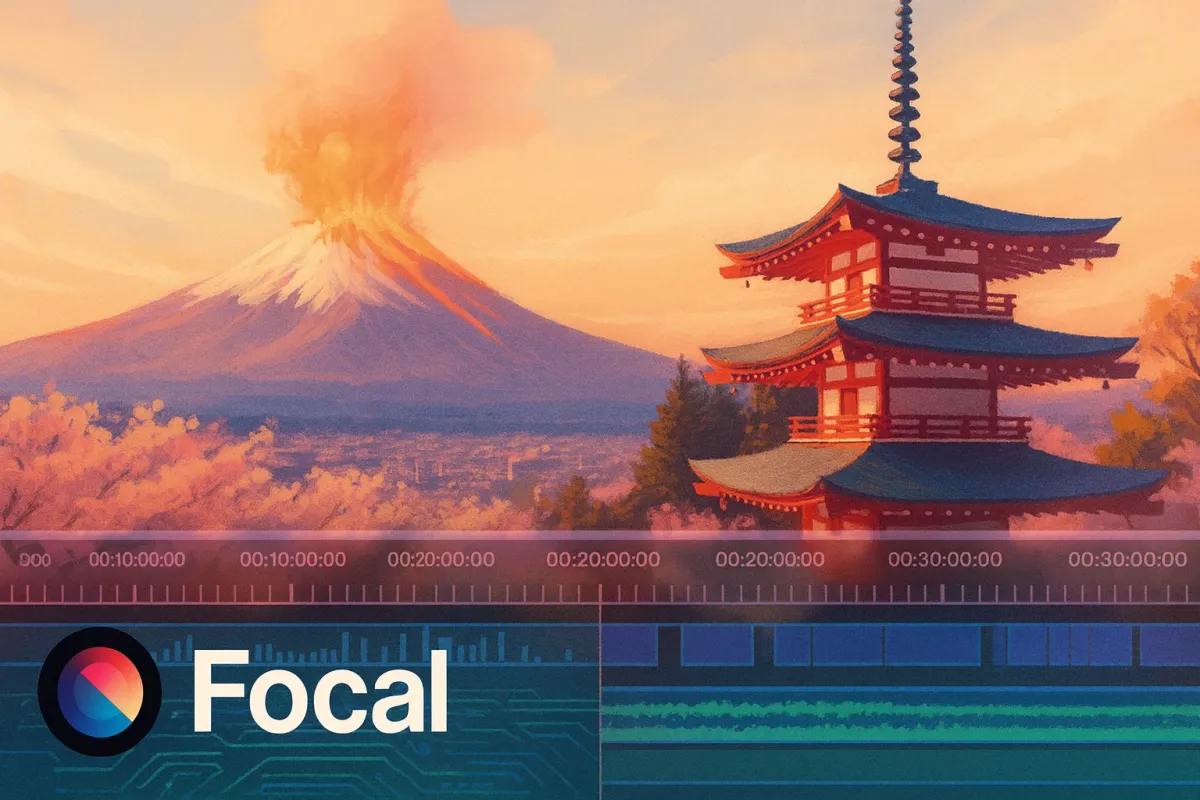How Tokyo Is Using AI Video to Prepare for a Mount Fuji Eruption

Mount Fuji last erupted in 1707. Ash blanketed what was then Edo, choking crops and damaging homes. Centuries later, the Tokyo Metropolitan Government is showing residents a new way to imagine what another eruption could mean. Instead of static maps or dry reports, they turned to AI-generated video simulations that capture the cascading impacts on modern infrastructure, health, and daily life.
Table of Contents:
- AI Video Showing How Fast Ash Could Reach Tokyo
- Infrastructure Disruptions Visualized by AI
- Why AI-Generated Disaster Simulations Work
- Practical Preparedness Lessons Shown in the AI Video
- How AI Video Prepares Cities Beyond Japan
- Preparing for a Mount Fuji Eruption With AI Video Is About Readiness, Not Fear
AI Video Showing How Fast Ash Could Reach Tokyo
In the simulation, volcanic ash spreads from Mount Fuji to Tokyo within one to two hours, depending on wind direction. Watching this unfold in video form makes the hazard more tangible than charts or numbers.
- Streets go dark as visibility drops.
- Flights are grounded within minutes of ash entering the skies.
- Train lines clog, trapping commuters who rely on Tokyo’s vast rail system.
This level of detail helps residents grasp how quickly daily routines could collapse.
Infrastructure Disruptions Visualized by AI
Rather than listing risks in a report, the AI video illustrates them in sequence. Here is a simplified breakdown of what the simulation highlights:
| Area Impacted | Example Shown in Video |
|---|---|
| Transportation | Grounded planes, paralyzed trains, ash-covered roads |
| Power & Utilities | Grid failures, blocked sewers, contaminated water supply |
| Communication Systems | Signal interruptions, internet outages |
| Health Risks | Respiratory issues, particularly for children and elderly |
This table format mirrors how viewers process the video, connecting visuals with real-world consequences.
Why AI-Generated Disaster Simulations Work
The strength of these AI video models is not in predicting the eruption but in making abstract risks visible. Traditional hazard maps can be difficult for the public to interpret. Video makes the scenario vivid and personal.
- Memory gap: No living person has witnessed Mount Fuji erupt. Video fills that gap.
- Behavioral trigger: Seeing ash darken the skies over Tokyo encourages people to act, not just read.
- Scenario flexibility: Models can generate multiple outcomes depending on eruption scale or wind direction.
This output capability creates a bridge between scientific data and human preparedness.
Practical Preparedness Lessons Shown in the AI Video
The closing scene of the simulation shifts tone. It shows an ordinary household with stocked shelves and emergency kits. This is a subtle but powerful call to action.
Residents are encouraged to keep:
- Non-perishable food and water for several days
- Respiratory masks to handle fine ash
- First-aid kits and essential medicines
- Battery-powered radios for information when networks fail
What might feel like over-preparation is reframed as practical once you’ve seen the AI video.
How AI Video Prepares Cities Beyond Japan
While this simulation is focused on Mount Fuji, the same output methods can be applied globally. Cities in volcanic, earthquake, or even flood-prone zones can adapt AI video to visualize their own scenarios.
- Naples, Italy could simulate ash from Vesuvius.
- Jakarta, Indonesia might model sea-level rise and storm surges.
- Los Angeles, USA could show earthquake aftershocks hitting infrastructure in real time.
The lesson is clear. When people see what disaster looks like in their streets and homes, preparedness shifts from abstract advice to a lived experience.
Preparing for a Mount Fuji Eruption With AI Video Is About Readiness, Not Fear
Seeing Tokyo’s streets go dark under ash in an AI video makes disaster planning feel a lot less abstract. It’s not about predicting the exact moment Mount Fuji will erupt, it’s about understanding the ripple effects on your daily life and getting practical about what you’d do. These simulations are powerful because they move beyond numbers and maps. They show you what it feels like when systems break down and remind you that small steps like a stocked kit or backup plan actually matter.
If that kind of visual clarity helps you prepare, imagine what else you could create when you try out different AI models inside Focal. You’re not just looking at data anymore, you’re seeing what it could mean for you in real life.
